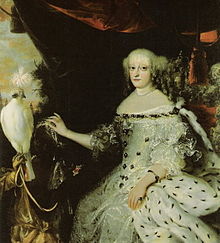Kammermohr
This article needs additional citations for verification. (March 2018) |


Kammermohr (or Hofmohr; pl. Kammermohren, lit. "chamber-black") was a German-language term since the 18th century for a court servant of black skin colour, which had by that time long been a common feature in European courts.[1]
History
People of black
The splendidly decorated Kammermohr, often in livery, served a ruler, church dignitaries or wealthy merchants as an exotic object of prestige and as a status symbol, showcasing their wealth and luxury lifestyle. Above all, however, the valets symbolized the worldwide relations of their employer.
Etymology
'Kammer' is the German word for chamber, in particular the private rooms of a wealthy person. 'Mohr' is ultimately derived from the name for the Moors, a historic people in the western Mediterranean who originated from northern Africa during the Middle Ages.
Hence, 'Kammermohr' would translate to 'chamber Moor'.
Other similarly derived words include
Notable examples
- Anton Wilhelm Amo, kammermohr of Anthony Ulrich, Duke of Brunswick-Wolfenbüttel.
- Adriaan de Bruin, kammermohr
- Angelo Soliman, kammermohr of Austrian Emperor Joseph II.
- Ignatius Fortuna, kammermohr of Countess Palatine Francisca Christina of Sulzbach
- Princess Sophia Albertine of Sweden.
- Abraham Petrovich Hannibal, kammermohr of Peter the Great
See also
References
- ISBN 978-3825896072.
